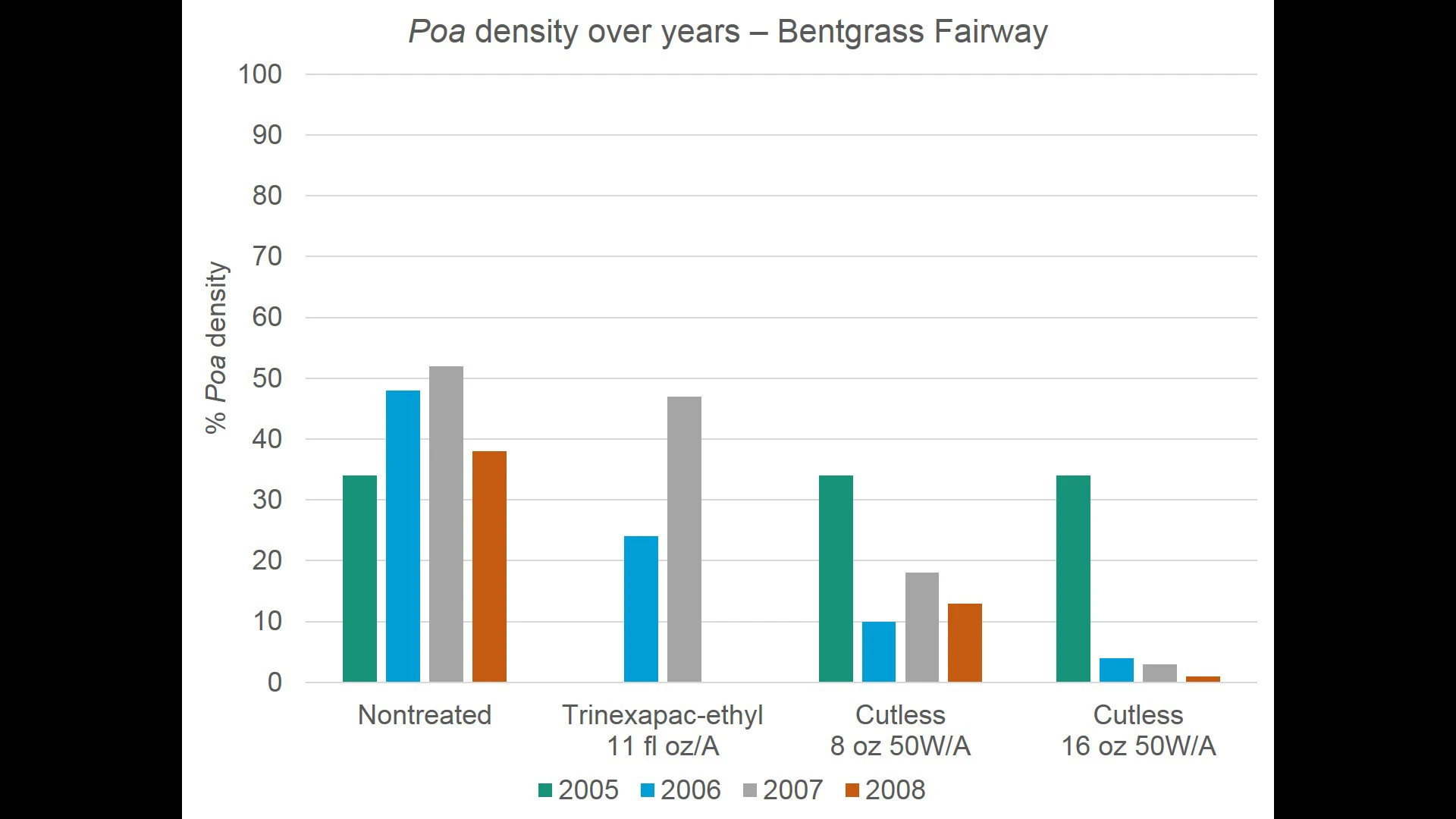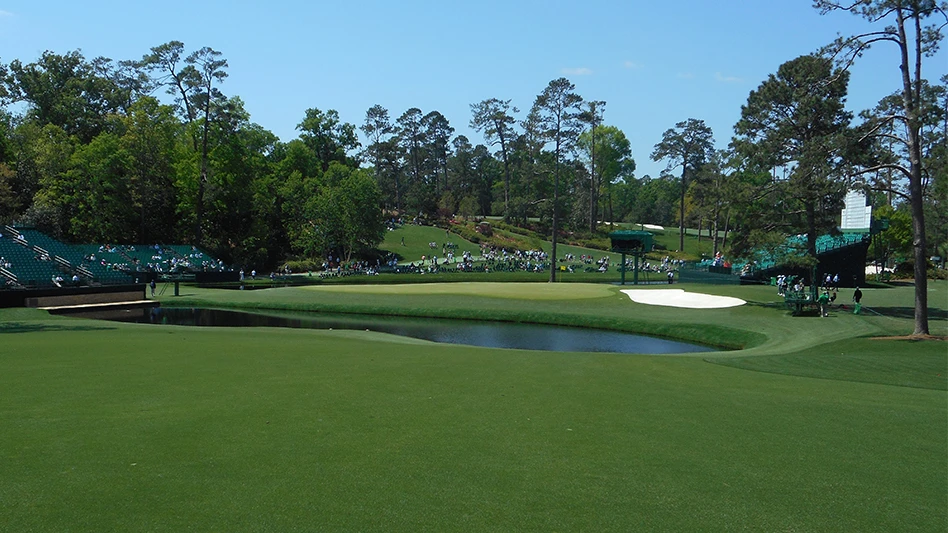
 |
A key aspect of successful and effective plant growth regulator (PGR) performance is consistant use over the long term. The following study examined this notion and found substantial and sustained reducations in annual bluegrass population over a four year period.
The Study
.jpg) |
- A program approach to annual bluegrass conversion can reduce annual bluegrass populations over time.
- Herbicide application alone is not effective for complete annual bluegrass control.
- It's necessary to continuously discourage annual bluegrass growth and development through applications of a plant growth regulator (PGR), such as Cutless, due to the continuous germination and aggressive colonization potential of annual bluegrass.
- Trinexapac-ethyl applications were not evaluated in 2008 because of poor performance in 2006 and 2007.
Latest from Golf Course Industry
- Smart Greens Episode 1: Welcome to the digital agronomy era
- PBI-Gordon promotes Jeff Marvin
- USGA investing $1 million into Western Pennsylvania public golf
- KemperSports taps new strategy EVP
- Audubon International marks Earth Day in growth mode
- Editor’s notebook: Do your part
- Greens with Envy 66: A Southern spring road trip
- GCSAA’s Rounds 4 Research auction begins





